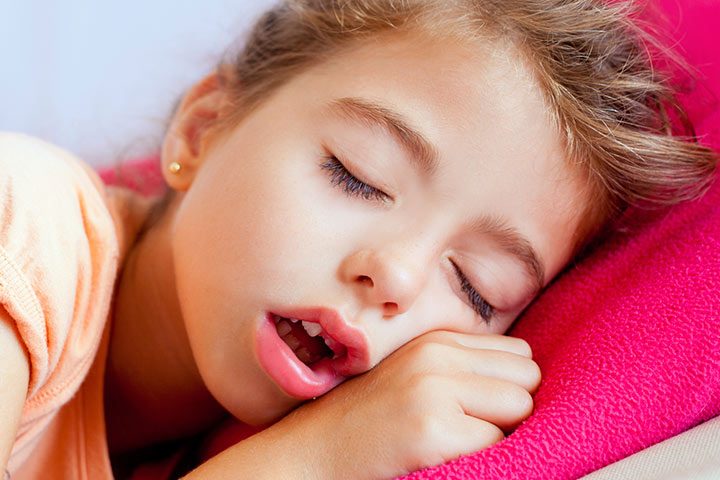What You Need to Know If Your Child Snores?
Table of Contents
Snoring in children! Yes, you read it right. Generally, we think snoring is age-related phenomenon, only old people snore, but it is true that a child can snore too. Actually, snoring is a milder, primary and major clinical symptom of Sleep-disordered breathing (SDB), a group of conditions characterized by breathing difficulties while sleeping, which may range from snoring to significant partial upper airway obstruction and obstructive sleep apnea (OSA). However, very often potential sleep disorders in children are unrecognized and under-reported.
Snoring in a child may indicate some underlying issues (Not Always) and could be potentially harmful to their development. These children may face behavioural problems, health issues and poor school achievement. If your child snores regularly, is a restless sleeper, is very sleepy during the day, or has another issue with sleep, talk to your doctor, your child may have sleep-related issues.
Primary Snoring
- As stated above, a sleep history of nocturnal snoring every night or almost every night is a hallmark of primary snoring in the absence of other relevant pathologies.
- It denotes loud snoring at least three nights per week.
- Very often snoring is totally benign, a consequence of a removable stimulus (ie, nasal congestion, excess fatigue, central nervous system [CNS] depressants, sleep positions.
- Not every child who snores habitually has OSA, approximately 2–3% will have the clinically relevant disease.
Obstructive Sleep Apnea or OSA
- Word ‘Apnea’ means lack of breathing. So, apnea due to something blocking or obstructing airway when a person falls asleep is Obstructive sleep apnea.
- Brief pauses in breathing during sleep are normal. But, a longer period of breathing cessation is called as sleep apnea.
How does OSA Occur?
- Our upper airway is not supported by any bone or cartilage, so tends to collapse when a person sleeps, but soon restored by the action of dilator muscles of the airway. But, in Apnoea, an imbalance between forces that promote airway dilation and forces that promote collapse occurs, followed by airway obstruction.
- Oxygen levels in the body drop down, the patient has a feeling of being choked, sleep is disrupted. The child will wake up from sleep to restore airway, gasps and takes a few deep breaths, and falls back to sleep, at which point the upper airway dilating muscles relax again and the cycle starts off once more.
- These episodes of upper airway narrowing, terminated by arousal, may recur many hundred times in a night; and the recurrent sleep disruption can lead to daytime symptoms.
- The incidence of OSA in children is most elevated between ages 2 to 6 years old.
How can OSA affect your Child?
- OSA can lead to learning, behaviour, growth-related complications, impaired daytime functioning, day time hyperactivity and inattention are associated with restless sleep.
Risk Factors of Sleep Disordered Breathing
Airway Narrowing
1. Airway infections or allergies: Frequent episodes of viral infections, the common cold, and otitis media infections, Asthma or atopy
2. Adenotonsillar hypertrophy: Tonsillar tissue begins to shrink after the age of six but the presence of large tonsillar and adenoid tissue may negate this normal reduction and obstruction may persist.
3. Nasal abnormality: the presence of allergic rhinitis, chronic rhinosinusitis, turbinate hypertrophy, rhinorrhea, nasal polyps, nasal septum deviation, or any other factor likely to increase nasal airflow resistance.
4. Dental anomalies: Large tongue or small lower jaw, high arched palate, retropositioning of the mandible or maxilla, or cleft deformities. A small jaw or retropositioned lower jaw pushes the tongue into the back of the throat, causing blockage of breathing.
5. Obesity: BMI percentiles above 95% would place a child at-risk for OSA due to the mass loading of the upper airway and respiratory muscles.
Family History
Having another family member with OSA
Craniofacial Disorders
Include Pierre Robin sequence, Crouzons syndrome, Apert’s syndrome, Treacher Collins syndrome, and Prader Willie Syndrome, etc.
Passive Smoking
Parental smoking and exposure to cigarette smoke are related to sleep disorders in childhood, the effect being proportional to the number of cigarettes smoked by their parents, especially maternal smoking. Chronic exposure to tobacco smoke may augment upper airway inflammation in children increasing airway resistance.
Symptoms of Sleep Disorders
- Snoring, often associated with pauses, snorts, or gasps
- Heavy breathing while sleeping
- The kid may struggle to fall asleep
- Sleep-onset delay
- Increased need for comforting activities
- The child will not sleep without a night light
- Being afraid of sleeping alone
- Teeth grinding or bruxism
- Turning and tossing in the bed
- Night awakening
- Sleep-talking or walking, sleep terrors and nightmares
- Enuresis and bed-wetting in children.
- Mouth breathing and adenoidal face (facial features typical to the person who breathes through the mouth)
- Hyponasal voice, Nasal speech pattern and stuffy nose
- Frequent visits to the doctor for respiratory-related symptoms
- Excessive tiredness and irritability during the daytime, disorders of excessive somnolence (difficulty in waking up, tiredness upon waking up, daytime somnolence), Sleeping in a seated position or with the neck hyperextended
- Headaches on awakening
- Sleeping in a seated position or with the neck hyperextended,
- Sleep hyperhidrosis (night sweating, falling asleep sweating)
Pic Credit: momjunction.com




